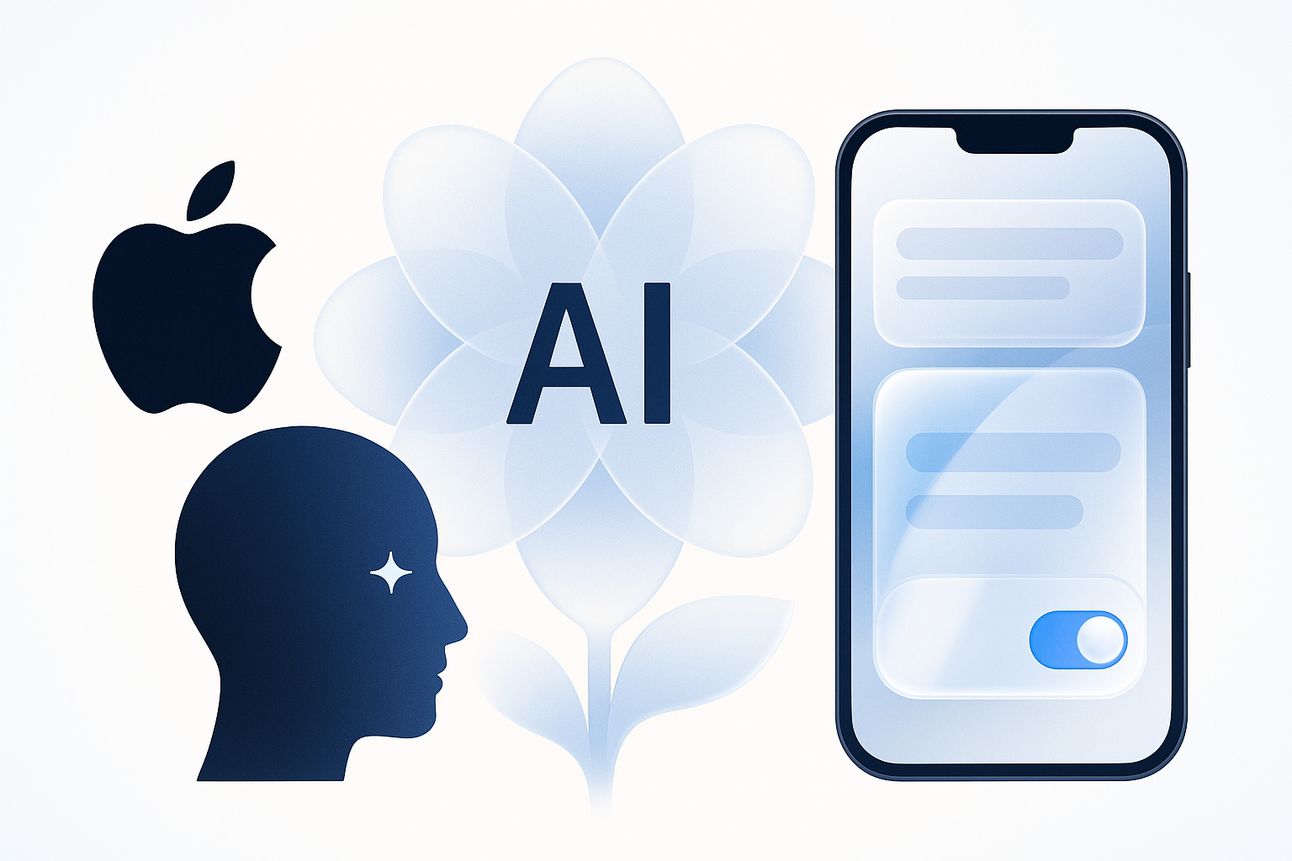Apple’s Worldwide Developers Conference (WWDC) 2025 unveiled a suite of new AI features branded Apple Intelligence and showcased a significant visual redesign called Liquid Glass, which applies translucent, glass-like effects to menus and toolbars across all major Apple platforms. Apple also announced a shift in its OS naming scheme — the next iPhone software will be known as iOS 26, aligning with a model-year format.
Despite these updates, the event received a lukewarm reception from analysts and tech media, mainly due to another delay in releasing a fully overhauled version of Siri. IDC’s Francisco Jeronimo summarized the event as focused on "careful calibration, platform refinement and developer enablement" rather than disruptive innovation. Other commentators simply called the keynote a "dud."
AI Features: Functional, Not Flashy
Apple’s Visual Intelligence can now analyze entire screen content to suggest contextual actions, such as detecting event details in a flyer and prompting calendar creation. It also enables image-based queries using ChatGPT, similar to Google’s Circle to Search announced years prior.
The new Live Translation feature provides real-time LLM-powered translations for both Messages and FaceTime audio, complete with onscreen captions. This positions Apple as a more inclusive communication platform but is a feature already commonplace in Samsung and Google ecosystems.
In creative tools, Genmoji allows users to generate emojis by mixing existing ones, while Image Playground uses ChatGPT to generate playful visuals on demand. These are fun, highly shareable experiences — but still don’t push Apple ahead of the AI curve.
Hold Assist, a new feature in the Phone app, will wait on hold for you and alert you when a real agent is available. Apple Watch gains a new Workout Buddy, a personal trainer-style feature that gives voice-based encouragement using AI-generated scripts based on your activity data.
Siri Delay: Still Not Ready
Apple’s virtual assistant Siri was notably absent from any major overhaul at WWDC 2025. Craig Federighi admitted that a new version of Siri "needed more time to reach a high-quality bar," pushing the anticipated AI upgrade to 2026 or later. Forrester’s Dipanjan Chatterjee called the silence around Siri "deafening."
The delay reinforces the technical difficulty Apple faces in matching or exceeding the performance of cloud-native assistants like ChatGPT or Gemini while maintaining its commitment to on-device privacy and reliability.
Opening Apple Intelligence to Developers
One of the more substantial announcements: Apple’s on-device Apple Intelligence Foundation Model is now accessible to third-party developers. Through the new API, developers can build AI features that run locally, respecting privacy while avoiding cloud compute costs.
For instance, a notes app could generate a quiz from your notes or summarize content using the same LLM that powers Apple’s own features. Developers can also now use Shortcuts with natural language prompts — AI will generate multi-step workflows using either local models or Apple’s new Private Cloud Compute infrastructure.
Apple even gave developers tools inside Xcode 26 to build AI-powered apps faster, including a built-in ChatGPT assistant for debugging and code generation.
Privacy Strategy: Local First
Apple’s restrained rollout of AI reflects its privacy-first philosophy. Unlike Google or Meta, Apple is not chasing massive centralized models or chatbot-style assistants. Instead, it is embedding generative AI into tightly scoped use cases — and always on its terms.
Most AI features either run on-device or via Private Cloud Compute, a system that encrypts and isolates user data during model inference. Even ChatGPT integrations are sandboxed and opt-in.
This strategy avoids many of the trust issues that have plagued other tech giants. But it may come at the cost of perceived innovation. While Google, OpenAI, and others race ahead with public-facing AI assistants, Apple is methodically upgrading the experience within its own walled garden.
The Real Question: Vision or Catch-Up?
WWDC 2025 lacked a defining AI moment. Many of the features, while welcome, felt like table stakes. Combined with Siri’s continued stagnation, the event did little to suggest Apple is leading in foundational AI.
Is this a deliberate strategy to integrate AI slowly and responsibly, or a sign that Apple is behind in model development? Realistically, it’s both.
Apple’s strength remains in ecosystem control, not speed. Its AI rollout shows clear intent: control the AI layer, prioritize user trust, and ensure nothing disrupts the seamless iOS experience. The real test will come in 2026, when Apple is expected to finally launch the next generation of Siri. Until then, Apple’s AI play remains measured, polished, and—for now—mostly reactive.
Quick Recap of Key Features:
Visual Intelligence: Understands your screen, suggests actions, and enables ChatGPT image queries.
Live Translation: Real-time text and audio translation with subtitles inside native Apple apps.
Foundation Model API: Developers can now build apps using Apple’s on-device AI.
Intelligent Shortcuts: Natural language workflows with local or private cloud execution.
Genmoji + Image Playground: Creative emoji mixing and ChatGPT-powered image generation.
Hold Assist + Workout Buddy: Quality-of-life features powered by simple task-focused AI.
If Apple can deliver a smarter Siri and show true model innovation by next year, its privacy-first, ecosystem-centric AI vision may start to pay off. But for now, WWDC 2025 was an exercise in steady evolution, not revolution.
Find out why 1M+ professionals read Superhuman AI daily.
In 2 years you will be working for AI
Or an AI will be working for you
Here's how you can future-proof yourself:
Join the Superhuman AI newsletter – read by 1M+ people at top companies
Master AI tools, tutorials, and news in just 3 minutes a day
Become 10X more productive using AI
Join 1,000,000+ pros at companies like Google, Meta, and Amazon that are using AI to get ahead.



